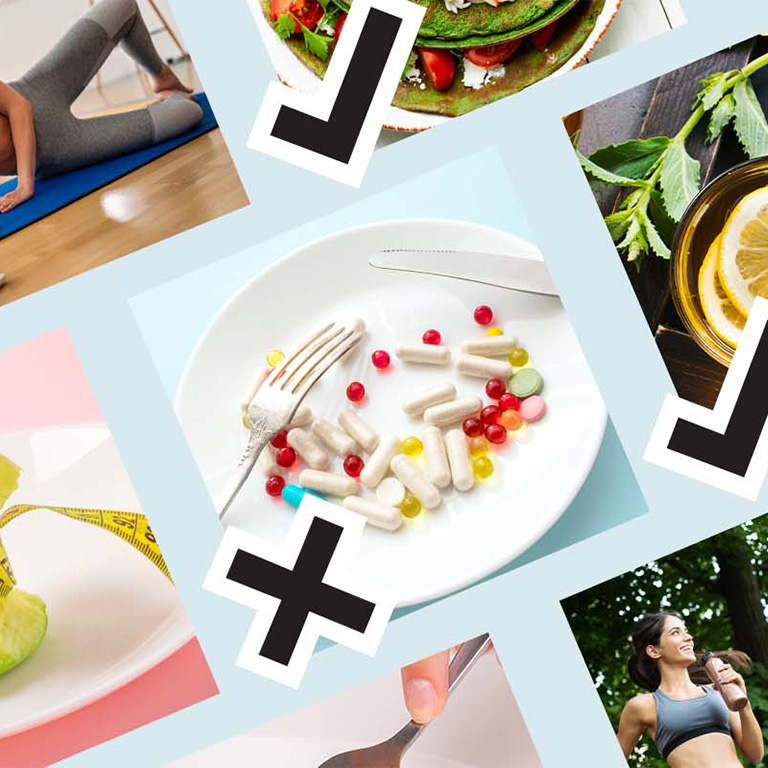Make letting go of these toxic fads and ideas about fitness part of your New Year’s resolutions
For many people, getting fitter is at the top of their New Year’s resolutions. For some, this means reaching a goal weight or reducing their body fat percentage to ultimately live a healthier and happier life. For others, this resolution has more to do with cosmetic reasons than anything else. Of those that aim to get fit for purely cosmetic reasons, the goal is usually to lose fat, such that you could either look thinner or more burly depending on the image you want to portray.
Whether intentional or not, many businesses and social media influencers perpetuate these notions by targeting insecurities, and we listed down below the toxic fitness fads that you should say goodbye to once the new year comes.
Weight loss supplements
Weight loss capsules are the more recent fitness fads with staying power after flat tummy shakes and appetite-suppressing lollipops lost their steam due to backlash. Some dietary supplements are more widely accepted—despite having no approved therapeutic claims—because they are marketed as being effective and herbal. Others even have fruits and herbs on the packaging to really seal the deal. However, you’re better off saving money by cooking balanced meals and doing exercises at home instead because the risks outweigh the supposed benefits.
RELATED: The Benefits and the Risks of Dietary Supplements
There are also dietary supplements that have questionable ingredients like garcinia cambogia and hydroxy citric acid that have common side effects such as nausea, an upset stomach, diarrhea, headaches, and dizziness. Although such supplements intend to promote weight loss by suppressing appetite and enhancing fat oxidation, these ingredients can also interact badly with diabetes medicines such as insulin. At worst, taking weight loss supplements with garcinia cambogia can lead to fulminant hepatic failure or acute liver injury which can be severe and even fatal.
If you are intent on losing fat and need help to do it, consult your doctor and fitness trainer to discuss wellness programs and prescription weight loss drugs.
Extreme dieting
Similar to the popularity of weight loss supplements, more extreme diets like intermittent fasting, paleo diets, and ketogenic diets are popular because they are seen as immediate fixes to weight gain. While these methods aren’t inherently harmful when done correctly, they could instead perpetuate an unhealthy relationship with food and self-image. That’s because your results could be far from what you desired, resulting in an unhealthy obsession with increased fasting or reducing your carb intake to more than the suggested amount. Without expert guidance from a doctor and trainer, you won’t know if the diet you’re undertaking is actually effective for your body, lifestyle, age, and gender—these all play a part in your weight journey.
RELATED: Custom Wellness is the Future of Medicine—But What is it?
If you are intent on making a new eating plan, consult your doctor. Some clinics even do customized and holistic diet programs for their patients. Otherwise, forego the scheduled meals and unnecessary restrictions, and eat as you please.
Unhealthy fitspiration
The idea of the “ab cracks” has been around for a long time, but it’s making its rounds on social media again with celebrities at the forefront. An ab crack is basically a single line or crack appearing in between your abdominal muscles. Many people—not just women—work their bodies to the limit with this goal in mind, but it’s objectively unrealistic. Ab cracks are genetic, meaning that you won’t achieve this look if your body isn’t meant to. This is similar to how hourglass figures aren’t realistic or healthy fitness goals either because there are genetic factors in play behind “hip dips.”
If your body does naturally have the ab crack and you’d like to make it more prominent, then regular exercise should get you there eventually. Although, it is important to note that you can’t get there by spot-reducing fat. How much fat you lose and where you lose it from differs per person, so it’s best to consult the experts to better understand your body. Not only that, but healthy body fat percentages also differ between the sexes, so avoid taking inspiration or advice from people that don’t understand this. For example, the healthy range of body fat for men is significantly lower than the healthy range for women.
In line with the concept of turning women’s bodies into trends, it’s interesting to note that slimmer bodies and their accompanying low-rise jeans are “in” again. After the Kardashians led the “thighbrow” and BBL (Brazilian butt-lift) craze to knock the popularity off of thigh gaps, netizens have noticed that Kim and Khloe Kardashian have slimmed down and gotten rid of their BBLs. Many fans have become inspired by this change and are hurrying to get the same results, while others are worried that this means disordered eating will run rampant again as it had in the past.
RELATED: Healthy Fitluence: Six Fitness Influencers You Should Follow Right Now
With these in mind, the trending goal shouldn’t be about looking a certain way or replicating a celebrity’s body. Instead, fitness should be about getting strong enough to live a full, long life in whatever shape comes with it.







